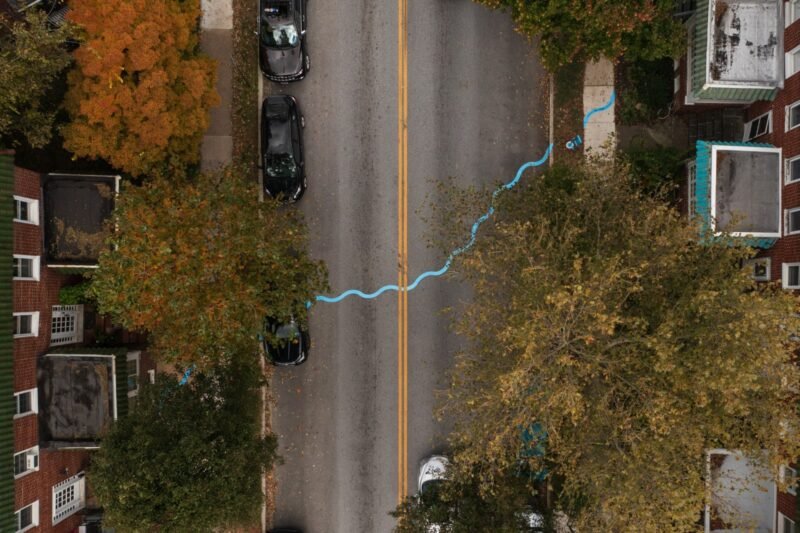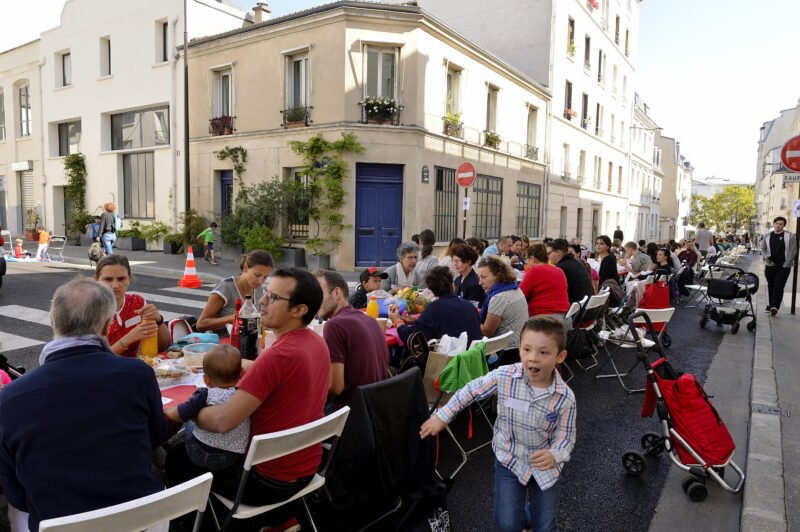Cairo Is The World’s Largest Open Air Chair Museum
Guerrilla chairs are a widespread phenomenon in Cairo’s public spaces. Shortly ahead of the launch of the book Sidewalk Salon: 1001 Street Chairs of Cairo this May, we got the chance to talk to authors David Puig and Manar Moursi about the Egyptian capital and its status as the world’s largest open air chair museum.
We’re curious how you came up with the idea to portray the chairs of Cairo’s streets. What do you find so fascinating about them?
“We first noticed the chairs in 2011 and were struck by their almost sculptural qualities, saying that some even appeared as art installations. We were attracted by their imperfect charm and singular character, and beyond the fascination coming from the chairs themselves we discovered topics that were related to the chairs. Socio-economic issues and gender-related questions as well as surveillance and control aspects made us create this project, which arose from a simple interest in design and a better understanding of the shape of a city.”

The authors of Sidewalk Salon: 1001 Street Chairs of Cairo are currently running a crowd-funding campaign on Indiegogo
Are street chairs are a typical feature of Cairo’s streets? At least they’re something that we can hardly find in Central and Western European cities.
“We like to think of Cairo as the biggest open air chair museum in the world where you can wander through the history of furniture design — you can find everything from monobloc to bentwood Thonet chairs and Bauhaus-style steel seats. We stress though that the chairs can only be found in the older parts of the city. In the new residential suburbs social life doesn’t take place on the pavement any longer but in malls and private clubs. There the only chairs you’ll find are the workplaces of private security guards hired to watch over the residences of the wealthy.”


Can you tell us more about the role and the use of the chairs in Cairo in general, their possible contribution to a busy public life and how they affect the quality of life in the city?
“The chairs are mostly used in two different ways: they’re either part of a recreational activity, like having a coffee outside, or they’re part of an economic activity that requires to work outside, like doormen, parking attendants, grocery sellers, and informal vendors. The shift of social life from indoors to outdoors is more of a practical matter (small, crammed apartments and rare public spaces and jobs that require being outside). Moreover, it also has a good effect on the side — the fact that there are always people outside contributes to the security of the city. Jane Jacobs would be happy to hear so! Seen from a gender perspective, men dominate a vast majority of public spaces and woman could face harassment there. We see the public life in Cairo as a Russian nesting doll whose inner layers are more feminine than its masculine outer and more visible shells, which means that in the more intimate regions of the city, particularly in neighbourhoods with a strong sense of community, women socialize on the sidewalk with less restriction than elsewhere.”


Do the chairs have a certain impact on the city’s public spaces? And do they maybe even create small public spaces in Cairo’s streets?
“The chairs and their influence on public life can best be compared with regular maritime tides: everyday around mid-morning they appear on the sidewalks and create small public spaces around which people gather. As the day progresses, the density of the chairs rises to its highest level but during the warm months and Ramadan they are also visible during the evenings and nights. We consider the phenomenon of the daily spread of chairs as a sort of guerrilla urbanism. Semi-public spaces are created where the owners of buildings, cafes and shops reclaim stretches of the sidewalk.”



When looking for chairs to portray in the book, you got in touch with many interesting chair owners, I presume?
“Even though we didn’t concentrate on the people, we conducted eleven interviews that are also included in the book. People tell about their chair, the time they spend there and their view on the surrounding neighbourhood. One person stood out in any ways — he had been sitting in more or less the same spot in Cairo for the last fifty years and could be seen as living memory of his community and its development.”

Why did you explicitly chose a Polaroid camera to capture the chairs?
“In our opinion a digital camera produces pictures that are too glossy and bright, while the subtle and slightly washed-out effects of a Polaroid image correspond well with the dusty and unkempt nature of Cairo’s sidewalks. Another plus of the Polaroid pictures was that they’re coming with the typical Polaroid frame, which automatically makes the collection of chairs look like a formal catalogue. Most importantly though, the Polaroid camera helped us to break the ice and dispel people’s suspicion when we approached them and asked to take a picture of their chair. Once they saw how the images were printed instantly, they asked to keep a portrait of themselves with friends or family. This gift helped to balance their request and facilitated the exchange.”
Do you like the project? You can help funding the book Sidewalk Salon: 1001 Street Chairs of Cairo on Indiegogo. Be quick — less than a week is left!



